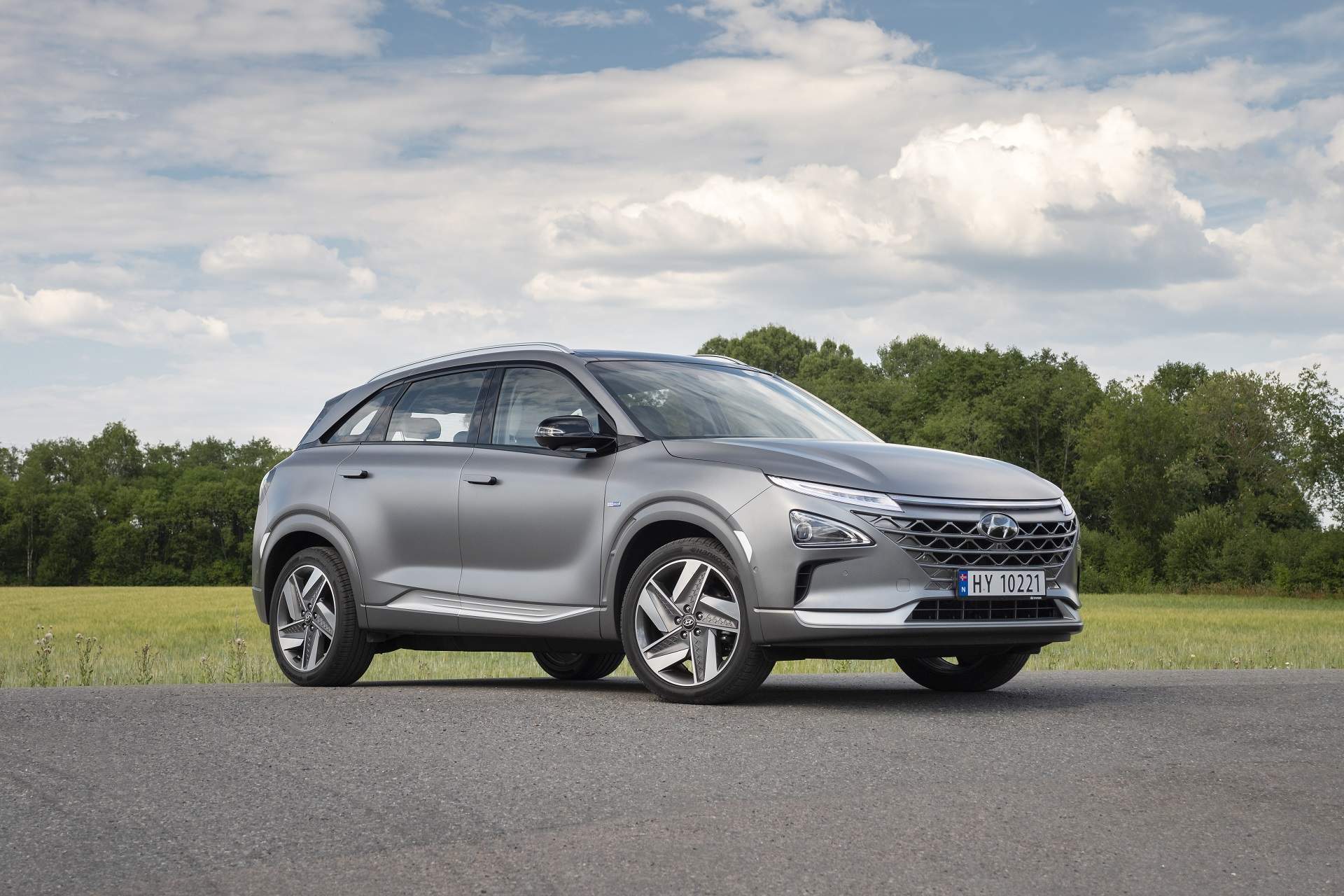
Put the H with the O and you get the hydrogen fuel cell-powered Hyundai Nexo, a car that cleans the air while it is being driven.
Available from 2019, it drives as quietly and as smoothly as an electric or hybrid car and recently won five stars in the European New Car Assessment Programme safety tests.

Access deeper industry intelligence
Experience unmatched clarity with a single platform that combines unique data, AI, and human expertise.
To mark Clean Driving Month in October, Hyundai developed a stunt to show how the Nexo cleans the air as it drives. A standard automotive panel filter in every car scrubs the air of particulate matter.
The filtration system in the Nexo can go down to PM2.5 and claims to remove 99.9% of these particulates from the air it draws in.
“When the Nexo is driven for just one hour, 26.9 kilograms of air is purified – this is the same amount that 42 adults breathe in an hour,” claims Hyundai.
“And looking to the future, if 10,000 Nexos were on the road it would reduce the carbon reduction effect equivalent to planting 60,000 trees.”

US Tariffs are shifting - will you react or anticipate?
Don’t let policy changes catch you off guard. Stay proactive with real-time data and expert analysis.
By GlobalDataHow hydrogen fuel cell technology cleans the air
Notably, the powerful air filtration is just a by-product of the hydrogen fuel cell tech that powers the car.
Fuel cell expert Dr Michael Whiteley from University College London explains the technology: “In a nutshell, it’s a chemical reaction, which takes hydrogen gas, the most abundant element in the universe, and combines this with oxygen, from the air we breathe, in a fuel cell.
“So hydrogen comes to one side, oxygen on the other, these form together to create water H2O and releases electricity in the process and some heat, so the only thing that comes out the back of a fuel cell car whilst it’s being used is water vapour and a little bit of heat.”
The fuel cell is made from a polymer membrane, platinum catalyst, and carbon paper with steel plates holding the cells in place and distributing the gasses to the cell itself.
Electrons are split from the H2 molecule where they go around the cell by an electrical circuit.
The protons travel through the polymer membrane to meet the O2 on the other side.
The proton from the membrane meets the O2 and the electron from the external circuit and they then combine to form H2O.
The electron splitting from the H2 molecule and having to go around a circuit is used to power the electric motor – no more internal combustion engine or pistons.
An environmentally-sound supply of hydrogen
Whiteley describes where we get the hydrogen from as one of the main pitfalls with fuel cell technology.
“Hydrogen fuel cells are a very clean zero emission technology but currently the vast majority of the hydrogen we use is made from steam reformation of natural gas, which is a process of using methane and stripping the hydrogen out. There’s also some carbon emissions associated with this,” he says.
“So currently the hydrogen is not as green as it could be but if the technology keeps maturing and keeps commercialising in the trajectory it’s taking at the moment, there are clean methods we could use such as electrolysis, which is the complete opposite of a fuel cell.
“A fuel cell combines hydrogen and oxygen to make water, electrolysis is splitting water for hydrogen and oxygen. And if you use renewable energy sources such as solar panels or wind turbines this whole process is a lot more green.”
Powerful air filtration, perks of the tech
He goes on the explain why the air needs to be purified.
“One of the benefits of fuel cell cars over another green technology such as battery electric cars is that they have to consume an air feed, they need air to combine with the hydrogen,” he says. “So when you’re drawing this in, a fuel cell needs really high purity levels.”
So as a perk the Nexo cleans up the air.
Whiteley’s team used the London Air Quality Networks Database to find the hot spots of pollution in London, to illustrate the advantage of strong air filtering in the capital.
The fine dust in the air, or particulate matter, that is negative to people’s health regularly exceeds the UK and EU guidelines around Marble Arch and Marylebone Road in London.
“The correlation seems quite simple, wherever there’s a lot of congestion and a lot of idling traffic, where you have buses, trucks and cars stuck at traffic lights in really congested areas, the engines are still running and they’re producing these pollutants. And the big high-sided buildings are keeping the pollutants in place.”
How does the Hyundai Nexo compete?
Buying the car and adding support for the tech will push up demand for hydrogen at fuel stations and so increase demand for the cars. However, there are barriers to widespread adoption.
Right now there are only 11 hydrogen refuelling stations for the public in the UK.
More significant is the £60,000 price tag of the Nexo, especially when compared to the £35,000 base model for the electric Model 3 from Tesla, released in 2017.
The Nexo has a gross vehicle weight of 2,340 kilograms, 0-100 km/h acceleration of 9.2 seconds and maximum speed 179 km/h, says Hyundai.
By contrast, Tesla’s Model 3 specs include an average driving distance of 215 miles on a single charge and an acceleration speed of 0-60mph in less than six seconds.







